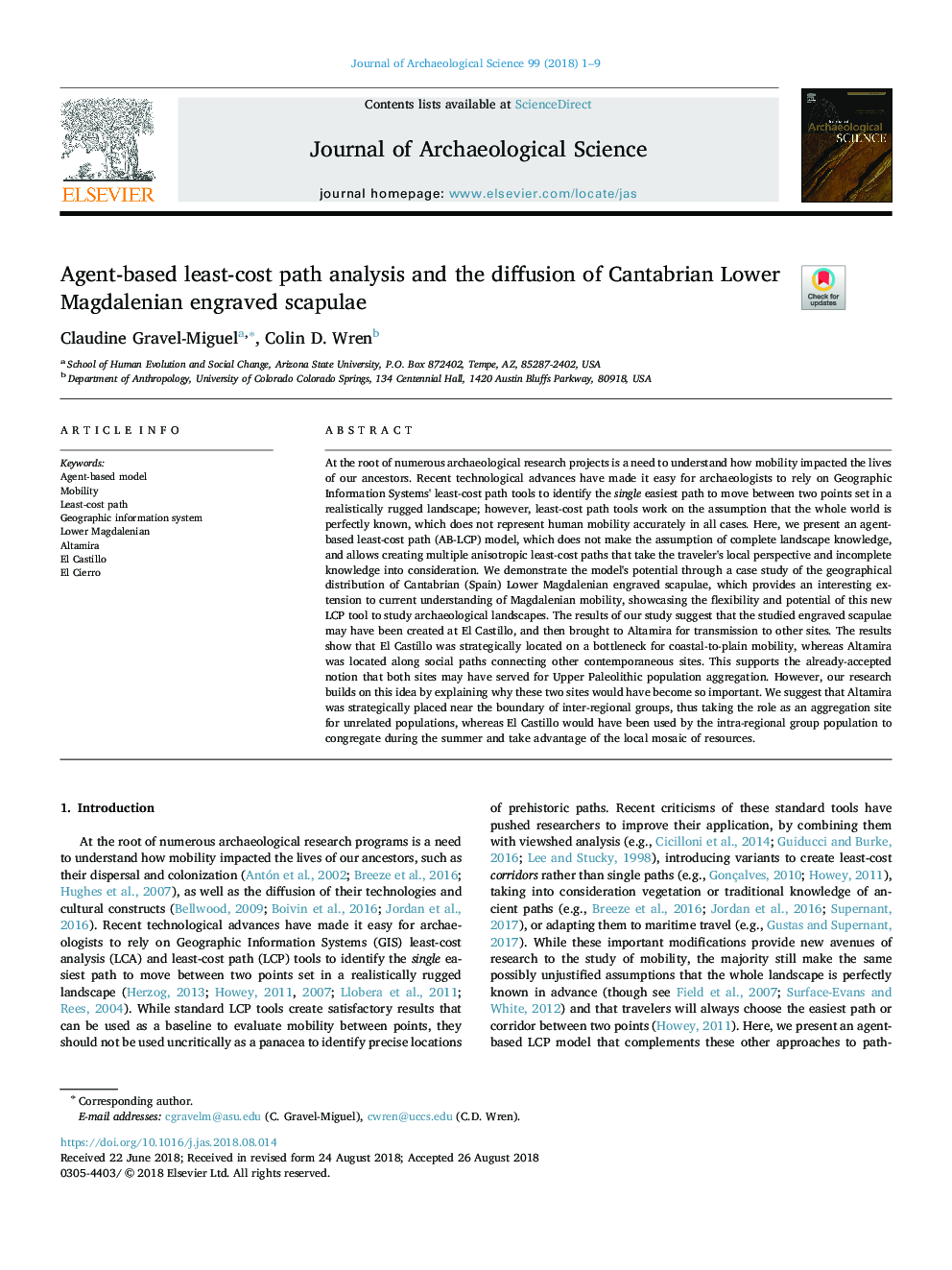| Article ID | Journal | Published Year | Pages | File Type |
|---|---|---|---|---|
| 10147173 | Journal of Archaeological Science | 2018 | 9 Pages |
Abstract
At the root of numerous archaeological research projects is a need to understand how mobility impacted the lives of our ancestors. Recent technological advances have made it easy for archaeologists to rely on Geographic Information Systems' least-cost path tools to identify the single easiest path to move between two points set in a realistically rugged landscape; however, least-cost path tools work on the assumption that the whole world is perfectly known, which does not represent human mobility accurately in all cases. Here, we present an agent-based least-cost path (AB-LCP) model, which does not make the assumption of complete landscape knowledge, and allows creating multiple anisotropic least-cost paths that take the traveler's local perspective and incomplete knowledge into consideration. We demonstrate the model's potential through a case study of the geographical distribution of Cantabrian (Spain) Lower Magdalenian engraved scapulae, which provides an interesting extension to current understanding of Magdalenian mobility, showcasing the flexibility and potential of this new LCP tool to study archaeological landscapes. The results of our study suggest that the studied engraved scapulae may have been created at El Castillo, and then brought to Altamira for transmission to other sites. The results show that El Castillo was strategically located on a bottleneck for coastal-to-plain mobility, whereas Altamira was located along social paths connecting other contemporaneous sites. This supports the already-accepted notion that both sites may have served for Upper Paleolithic population aggregation. However, our research builds on this idea by explaining why these two sites would have become so important. We suggest that Altamira was strategically placed near the boundary of inter-regional groups, thus taking the role as an aggregation site for unrelated populations, whereas El Castillo would have been used by the intra-regional group population to congregate during the summer and take advantage of the local mosaic of resources.
Keywords
Related Topics
Physical Sciences and Engineering
Materials Science
Materials Science (General)
Authors
Claudine Gravel-Miguel, Colin D. Wren,
